Archive for the ‘Technology’ Category
Starting starts with starting.
 If you haven’t done it before and you want to start, you have only one option – to start.
If you haven’t done it before and you want to start, you have only one option – to start.
Much as there’s a huge difference between lightning and lightning bug, there’s a world of difference between starting and talking about starting. Where talking about starting flutters aimlessly flower to flower, starting jolts trees from the ground; fries all the appliances in your house; and leaves a smoldering crater in its wake. And where it’s easy to pick a lightning bug out of the grass and hold it in your hand, it’s far more difficult to grab lightning and wrestle it into submission.
Words to live by: When in mid conversation you realize you’re talking about starting – Stop talking and start starting. Some examples:
Instead of talking about starting a community of peers, send a meeting request to people you respect. Keep the group small for now, but set the agenda, hold the meeting, and set up the next one. You’re off and running. You started.
Replace your talk of growing a culture of trust with actions to demonstrate trust. Take active responsibility for the group’s new work that did not go as planned (aka – failure) so they feel safe to do more new work. Words don’t grow trust, only actions do.
Displace your words of building a culture of innovation with deeds that demonstrate caring. When someone does a nice job or goes out of their way to help, send words of praise in an email their boss – and copy them, of course. Down the road, when you want help with innovation you’ll get it because you cared enough to recognize good work. Ten emails equal twenty benefactors for your future innovation effort. Swap your talk of creating alignment with a meeting to thank the group for their special effort. But keep the meeting to two agenda items – 1. Thank you. 2. Pizza.
When it comes to starting, start small. When you can’t start because you don’t have permission, reduce size/scope until you do, and start. When you’re afraid to start, create a safe-to-fail experiment, and start. When no one asks you to start, that’s the most important time – build the minimum viable prototype you always wanted to build. Don’t ask – build. And if you’re afraid to start even the smallest thing because you think you may get fired – start anyway. Any company that fires you for taking initiative will be out of business soon enough. You might as well start.
Talk is cheap and actions are priceless. And if you never start a two year project you’re always two years away. Start starting.
Image credit – Vail Marston
Orchids and Innovation – Blooms from the Same Stem
 Innovation is like growing orchids – both require a complex balance of environmental factors, both take seasoned green thumbs to sprout anything worth talking about, what worked last time has no bearing on this time, and they demand caring and love.
Innovation is like growing orchids – both require a complex balance of environmental factors, both take seasoned green thumbs to sprout anything worth talking about, what worked last time has no bearing on this time, and they demand caring and love.
A beautiful orchid is a result of something, and so is innovation. It all starts with the right seeds, but which variety? Which color? With orchids, there are 21,950 – 26,049 species found in 880 genera and with innovation there are far more options. So which one and why? Well, it depends.
It’s no small feat to grow orchids or innovate:
To propagate orchids from seed, you must work in sterile conditions. The seeds must be grown in a gelatinous substance that contains nutrients and growth hormones. You must also be very patient. It takes months for the first leaves to develop, and, even then, they will only be visible with a magnifying glass. Roots appear even later. It will be at least three, and possibly as many as eight years before you see a bloom. — http://www.gardeners.com/how-to/growing-orchids/5072.html
[This is one of the best operational definitions of innovation I’ve ever seen.]
But there’s another way:
It is far easier to propagate orchids by division. But remember that dividing a plant means forsaking blooms for at least a year. Also, the larger the orchid plant, the more flowers it will produce. Small divisions take many years to mature. — http://www.gardeners.com/how-to/growing-orchids/5072.html
So do you grow from seed or propagate by division? It depends. There are strengths and weaknesses of both methods, so which best practice is best? Neither – with orchids and innovation no practices are best, even the ones described in the best books.
If you’ve been successful growing other flowers, you’re success is in the way and must be unlearned. Orchids aren’t flowers, they’re orchids. And if you’ve been successful with lean and Six Sigma, you’ve got a culture that will not let innovation take seed. Your mindset is wrong and you’ve got to actively dismantle the hothouse you’ve built – there’s no other way. Orchids and innovation require the right growing climate – the right soil, the right temperature, the right humidity, the right amount of light, and caring. Almost the right trowel, almost the right pot, and almost the right mindset and orchids and innovation refuse to flower.
And at the start the right recipe is unknown, yet the plants and the projects are highly sensitive to imperfect conditions. The approach is straightforward – start a lot of seeds, start a lot of propagation experiments, and start a lot of projects. But in all cases, make them small. (Orchids do better in small pots.)
Good instincts are needed for the best orchids to come to be, and these instincts can be developed only one way – by growing orchids. Some people’s instincts are to sing to their orchids and some play them classical music, and they’re happy to do it. They’re convinced it makes for better and fuller blooms and who’s to say if it matters? With orchids, if you think it matters, the orchids think it matters, so it matters. And let’s not kid ourselves – innovation is no different.
With orchids and innovation, mindset, instincts, and love matter, maybe more than anything else. And for that, there are no best practices.
Image credit — lecercle.
Customer Value – the Crowned Jewel of Innovation
Innovation results in things that are novel, useful, and successful. These things can be products, services, data, information, or business models, but regardless of the flavor, they’re all different from what’s been done before.
And when things are different, they’re new; and that means we don’t know how to do them. We don’t know how to start; don’t know how to measure; don’t know how they’ll be received; don’t know if they’ll be successful.
In the commercial domain, successful means customers buy your products and pay for your services. When customers value your new stuff more than they value their money, they pay; and when they pay it’s success. But first things first – before there can be success, before there can be innovation, there must be customer value. With innovation, customer value is front and center.
How do you come up with ideas that may have customer value? There’s a goldmine of ideas out there, with some veins better than others, and any dowsing you can use to pan the high grade ore is time well spent. There are two tools of choice: one that channels the voice of the customer and a second that channels the voice of the technology.
Your technology has evolved over time and has developed a trajectory which you can track. (Innovation On Demand, Fey and Riven.) But at the highest level, as a stand-in for technology, it’s best to track the trajectory of your products – how they’ve improved over time. You can evaluate how your products improved over multiple lines of evolution, and each line will help you to channel the future from a different perspective.
The voice of your customers is the second divining rod of choice. What they say about you, your company, and your products can help you glean what could be. But this isn’t the same as VOC. This is direct, unfiltered, continuous real time capture of self-signified micro stories. This is VOC without the soothsaying, this is direct connection with the customer. (Sensemaker.)
There are two nuggets to pan for: limiting cant’s and purposeful misuse. You seek out groups of customer stories where customers complain about things your product cannot do and how those cant’s limit them. These limiting cant’s are ripe for innovation since your customers already want them. Purposeful misuse is when the radical fringe of your customer base purposely uses your product in a way that’s different than you hoped. These customers have already looked into the future for you.
Do these ideas have customer value? The next step is to evaluate the value of your diamonds in the rough. The main point here is only customers can tell you if you’ve hit the mother lode. But, since your ideas are different than anything they’ve experienced, in order assay the ideas you’ve got to show them. You’ve got to make minimum viable prototypes and let them use their loop to judge the potential cut, color, clarity, and carat. As a prospector, it’s best to evaluate multiple raw gemstones in parallel, and whatever customers say, even if you disagree, the learning is better than gold.
How can we deliver on the customer value? With your innovations in the rough – ideas you know have customer value – it’s time to figure out what it will take to convert your pyrite prototypes into 24 carat products. There are missing elements to be identified and fundamental constraints to be overcome and backplane of the transmutation is problem definition. Done right, the technology development work is a series of well-defined problems with clear definitions of success. From the cleaving, blocking and cutting of technology development the work moves to the polishing of product development and commercialization.
Innovation can’t be fully defined with a three question framework. But, as long as customer value is the crowned jewel of your innovation work, most everything else will fall into place.
If it’s not different, it’s not innovation.
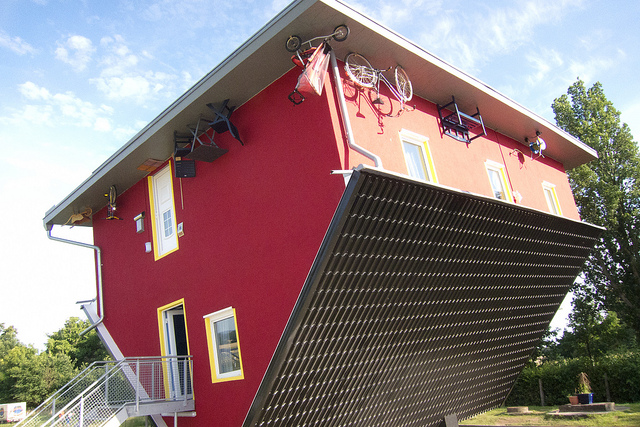 Creative products are novel and useful; Innovative products are novel, useful, and successful. Beforehand, it’s impossible to know if something will be successful, but if it’s useful there’s a chance it could be; beforehand, it’s subjective whether something will be useful, but if it’s novel there’s a chance; but no one is sure what novel means, so replace it with “different” and you’re onto something. It’s clear if something is different, and if it’s different, there’s a chance it could be creative and innovative. Said another way,
Creative products are novel and useful; Innovative products are novel, useful, and successful. Beforehand, it’s impossible to know if something will be successful, but if it’s useful there’s a chance it could be; beforehand, it’s subjective whether something will be useful, but if it’s novel there’s a chance; but no one is sure what novel means, so replace it with “different” and you’re onto something. It’s clear if something is different, and if it’s different, there’s a chance it could be creative and innovative. Said another way,
if something isn’t different it cannot be creative, nor can it be innovative.
If you can generate more things that are different, you’ve increased your chances of creativity and innovation. And if you generate more ideas that are different, you’ll create more things that are different. Go on a quest to create more ideas that are different and you’ll have more creativity and innovation.
Ideas that are different come from the firing of different neural pathways. And to get different pathways to fire, you’ve got to first recognize when the old ones are firing. To do this, you’ve got to be aware of your worn pathways and be aware you’re reusing the overused. A different environment is needed – an environment that governs speed. If you have a culture of speed and productivity, this will be different. It doesn’t matter what the different environment is, it matters what it isn’t.
Different ideas result from the collision of old ideas seen from a new perspective. Put different people together who have different old ideas and different perspectives and different ideas will grow from the collisions. There’s no recipe for the exact distribution of people, but if you don’t put them together now, then those are them.
And to break new neural pathways, the environment in which ideas should be different. Again, there’s no prescription for the type of space or the furniture, just that it’s different. If the engine that creates the old ideas lives in an ordered space, make the different one disordered; if there’s carpet all around, lay down some linoleum; if there’s no art on the corporate walls, hang some; if the furniture matches across the teams, make it a clustered-jumble of mismatched pieces. The general approach: whatever it looks like and feels like where the same ideas are regurgitated day-in-day-out, do the opposite.
And to attract different colliders and their ideas, provide something different in the different space. If your regular coffee is terrible, the different coffee should be amazing; where people queue up to use the same tired tools, provide too many seats of the newest and best; where low fat, low calorie, responsible food is doled out in reasonable portions, provide free (and unlimited) access to irresponsible junk food.
Creativity and innovation start with different.
Image credit: quinet.
Prototypes Are The Best Way To Innovate
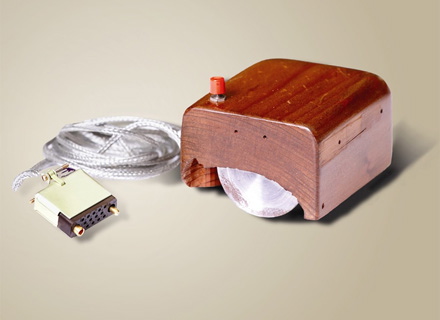 If you’re serious about innovation, you must learn, as second nature, to convert your ideas into prototypes.
If you’re serious about innovation, you must learn, as second nature, to convert your ideas into prototypes.
Funny thing about ideas is they’re never fully formed – they morph and twist as you talk about them, and as long as you keep talking they keep changing. Evolution of your ideas is good, but in the conversation domain they never get defined well enough (down to the nuts-and-bolts level) for others (and you) to know what you’re really talking about. Converting your ideas into prototypes puts an end to all the nonsense.
Job 1 of the prototype is to help you flesh out your idea – to help you understand what it’s all about. Using whatever you have on hand, create a physical embodiment of your idea. The idea is to build until you can’t, to build until you identify a question you can’t answer. Then, with learning objective in hand, go figure out what you need to know, and then resume building. If you get to a place where your prototype fully captures the essence of your idea, it’s time to move to Job 2. To be clear, the prototype’s job is to communicate the idea – it’s symbolic of your idea – and it’s definitely not a fully functional prototype.
Job 2 of the prototype is to help others understand your idea. There’s a simple constraint in this phase – you cannot use words – you cannot speak – to describe your prototype. It must speak for itself. You can respond to questions, but that’s it. So with your rough and tumble prototype in hand, set up a meeting and simply plop the prototype in front of your critics (coworkers) and watch and listen. With your hand over your mouth, watch for how they interact with the prototype and listen to their questions. They won’t interact with it the way you expect, so learn from that. And, write down their questions and answer them if you can. Their questions help you see your idea from different perspectives, to see it more completely. And for the questions you cannot answer, they the next set of learning objectives. Go away, learn and modify your prototype accordingly (or build a different one altogether). Repeat the learning loop until the group has a common understanding of the idea and a list of questions that only a customer can answer.
Job 3 is to help customers understand your idea. At this stage it’s best if the prototype is at least partially functional, but it’s okay if it “represents” the idea in clear way. The requirement is prototype is complete enough for the customer can form an opinion. Job 3 is a lot like Job 2, except replace coworker with customer. Same constraint – no verbal explanation of the prototype, but you can certainly answer their direction questions (usually best answered with a clarifying question of your own such as “Why do you ask?”) Capture how they interact with the prototype and their questions (video is the best here). Take the data back to headquarters, and decide if you want to build 100 more prototypes to get a broader set of opinions; build 1000 more and do a small regional launch; or scrap it.
Building a prototype is the fastest, most effective way to communicate an idea. And it’s the best way to learn. The act of building forces you to make dozens of small decisions to questions you didn’t know you had to answer and the physical nature the prototype gives a three dimensional expression of the idea. There may be disagreement on the value of the idea the prototype stands for, but there will be no ambiguity about the idea.
If you’re not building prototypes early and often, you’re not doing innovation. It’s that simple.
Ratcheting Toward Problems of a Lesser Degree
Here’s how innovation goes:
(Words uttered. // Internal thoughts.)
That won’t work. Yes, this is a novel idea, but it won’t work. You’re a heretic. Don’t bring that up again. // Wow, that scares me, and I can’t go there.
Yes, the first experiment seemed to work, but the test protocol was wrong, and the results don’t mean much. And, by the way, you’re nuts. // Wow. I didn’t believe that thing would ever get off the ground.
Yes, you modified the test protocol as I suggested, but that was only one test and there are lots of far more stressful protocols that surely cannot be overcome. // Wow. They listened to me and changed the protocol as I suggested, and it actually worked!
Yes, the prototype seemed to do okay on the new battery of tests, but there’s no market for that thing. // I thought they were kidding when they said they’d run all the tests I suggested, but they really took my input seriously. And, I can’t believe it, but it worked. This thing may have legs.
Yes, the end users liked the prototypes, but the sample size was small and some of them don’t buy any of our exiting products. I think we should make these two changes and take it to more end users. // This could be exciting, and I want to be part of this.
Yes, they liked the prototypes better once my changes were incorporated, but the cost is too high. // Sweet! They liked my design! I hope we can reduce the cost.
I made some design changes that reduce the cost and my design is viable from a cost standpoint, but manufacturing has other priorities and can’t work on it. // I’m glad I was able to reduce the cost, and I sure hope we can free up manufacting resources to launch my product.
Wow, it was difficult to get manufacturing to knuckle down, but I did it, and my product will make a big difference for the company. // Thanks for securing resources for me, and I’m glad you did the early concept work when I was too afraid.
Yes, my product has been a huge commercial success, and it all strarted with this crazy idea I had. You remember, right? // Thank you for not giving up on me. I know it was your idea. I know I was a stick-in-the-mud. I was scared. And thanks for kindly and effectively teaching me how to change my thinking. Maybe we can do it again sometime.
________________
There’s nothing wrong with this process; in fact, everything is right about it because that’s what people do. We’ve taught them to avoid risk at all costs, and even still, they manage to walk gingerly toward new thinking.
I think it’s important to learn to see the small shifts in attitude as progress, to see the downgrade from an impossible problem to a really big problem as progress.
Instead of grabbing the throat of radical innovation and disrupting yourself, I suggest a waterfall approach of a stepwise ratchet toward problems of a lesser degree. This way you can claim small victories right from the start, and help make it safe to try new things. And from there, you can stack them one on top of another to build your great pyramid of disruption.
And don’t forget to praise the sorceres and heretics who bravely advance their business model-busting ideas without the safety net of approval.
Occam’s Razor For Innovation
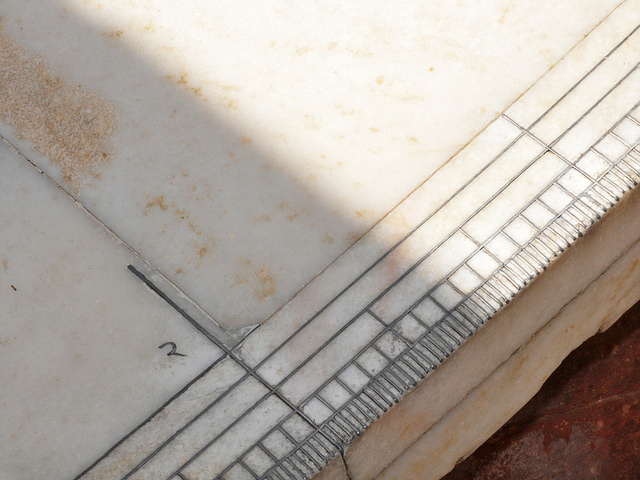 There are many flavors of innovation – incremental, disruptive, and seven flavors in between. And there is lots of argument about the level of innovation – mine’s radical and yours isn’t; that’s just improving what we already have; that’s too new – no one will ever buy it. We want to label the work in order to put it in the right bucket, to judge if we’re doing the right work. But the labels get in the way – they’re loaded with judgments, both purrs and snarls.
There are many flavors of innovation – incremental, disruptive, and seven flavors in between. And there is lots of argument about the level of innovation – mine’s radical and yours isn’t; that’s just improving what we already have; that’s too new – no one will ever buy it. We want to label the work in order to put it in the right bucket, to judge if we’re doing the right work. But the labels get in the way – they’re loaded with judgments, both purrs and snarls.
Truth is, innovation work falls on a continuum of newness and grouping them makes little sense. And, it’s not just newness that matters – it’s how the newness fits (or doesn’t) within the context of how things happen today and how customers think they should happen tomorrow. So what to do?
Customers notice the most meaningful innovations, and they notice the most meaningful ones before the less meaningful. Evaluate the time it takes a customer to notice the innovation and there may be hope to evaluate the importance of the innovation.
The technology reduces cost, and at the end of the month when the numbers are rolled up the accountants can see the improvement. This is real improvement, but there’s a significant lag and the people doing the work don’t see it as meaningful. This one’s a tough sell – buy this new thing, train on it, use it for three months, and if you keep good records and do some nifty statistics you’ll see an improvement.
The technology reduces scrap, and at the end of the week the scrap bin will be half full instead of fully full. Scrap is waste and waste reduction is real improvement. This is an easier sell – buy it and train on it and at the end of the week you’ll notice a reduction in scrap. This is important but only to those who are measured on scrap. And today the scrap is emptied every week, now we can empty it every other week. The time to notice is reduced, but the impact may not be there.
The technology increases throughput, and at the end of the shift the bins will be fuller than full. Here – try it for a shift and see what you think. If you like it, you can buy it. I’ll be back tomorrow with a quote. This is noticeable within eight hours. And at the end of eight hours there are more things that can be sold. That’s real money, and real money gets noticed.
The technology makes the product last two hours instead of one. Here – try it for a couple hours. I’ll go get a coffee and come back and see what you think. You won’t have to stop the machine nearly as often and you’ll put more parts into finished goods inventory. The technology gets noticed within two hours and the purchase order is signed in three.
Where the old technology was load, this is quiet. Don’t bother with ear protection, just give it a go. Pretty cool, isn’t it. Go get your boss and I’ll sell you a couple units right now. This one shows its benefits the end user right away – first try.
The most meaningful innovations get noticed instantly. Stop trying to label the innovation and simply measure how long it takes your customer to notice.
The Ladder Of Your Own Making
 There’s a natural hierarchy to work. Your job, if you choose to accept it is to climb the ladder of hierarchy rung-by-rung. Here’s how to go about it:
There’s a natural hierarchy to work. Your job, if you choose to accept it is to climb the ladder of hierarchy rung-by-rung. Here’s how to go about it:
Level 1. Work you can say no to – Say no to it. Say no effectively as you can, but say it. Saying no to level 1 work frees you up for the higher levels.
Level 2. Work you can get someone else to do – Get someone else to do it. Give the work to someone who considers the work a good reach, or a growth opportunity. This isn’t about shirking responsibility, it’s about growing young talent. Maybe you can spend a little time mentoring and the freed up time doing higher level work. Make sure you give away the credit so next time others will ask you for the opportunity to do this type of work for you.
Level 3. Work you’ve done before, but can’t wiggle out of – Do it with flair, style, and efficiency; do it differently than last time, then run away before someone asks you to do it again. Or, do it badly so next time they ask someone else to do it. Depending on the circumstance, either way can work.
Level 4. Work you haven’t done before, but can’t wiggle out of – Come up with a new recipe for this type of work, and do it so well it’s unassailable. This time your contribution is the recipe; next time your contribution is to teach it to someone else. (See level 2.)
Level 5. Work that scares others – Figure out why it scares them; break it into small bites; and take the smallest first bite (so others can’t see the failure). If it works, take a bigger bite; if it doesn’t, take a different smallest bite. Repeat, as needed. Next time, since you’ve done it before, treat it like level 3 work. Better still, treat it like level 2.
Level 6. Work that scares you – Figure out why it scares you, then follow the steps for level 5.
Level 7. Work no one knows to ask you to do – You know your subject matter better than anyone, so figure out the right work and give it a try. This flavor is difficult because it comes at the expense of work you’re already signed up to do and no one is asking you to do it. But you should have the time because you followed the guidance in the previous levels.
Level 8. Work that obsoletes the very thing that made your company successful – This is rarified air – no place for the novice. Ultimately, someone will do this work, and it might as well be you. At least you’ll be able to manage the disruption on your own terms.
In the end, your task, if you choose to accept it, is to migrate toward the work that obsoletes yourself. For only then can you start back at level 1 on the ladder of your own making.
Crossword Puzzle – Product, Technology, Innovation
Here’s something a little different – a crossword puzzle to test your knowledge on products, technology, and innovation. Complete the puzzle using the image below, or download it (and answer key) using the green arrows below, and take your time with it over the Thanksgiving holiday.
[wpdm_file id=5]
[wpdm_file id=4]
Less Before More – Innovation’s Little Secret
 The natural mindset of innovation is more-centric. More throughput; more performance; more features and functions; more services; more sales regions and markets; more applications; more of what worked last time. With innovation, we naturally gravitate toward more.
The natural mindset of innovation is more-centric. More throughput; more performance; more features and functions; more services; more sales regions and markets; more applications; more of what worked last time. With innovation, we naturally gravitate toward more.
There are two flavors of more, one better than the other. The better brother is more that does something for the first time. For example, the addition of the first airbags to automobiles – clearly an addition (previous vehicles had none) and clearly a meaningful innovation. More people survived car crashes because of the new airbags. This something-from-nothing more is magic, innovative, and scarce.
Most more work is of a lesser class – the more-of-what-is class. Where the first airbags were amazing, moving from eight airbags to nine – not so much. When the first safety razors replaced straight razors, they virtually eliminated fatal and almost fatal injuries, which was a big deal; but when the third and fourth blades were added, it was more trivial than magical. It was more for more’s sake; it was more because we didn’t know what else to do.
While more is more natural, less is more powerful. The Innovator’s Dilemma clearly called out the power of less. When the long-in-the-tooth S-curve flattens, Christensen says to look down, to look down and create technologies that do less. Actually, he tells us someone will give ground on the very thing that built the venerable S-curve to make possible a done-for-the-first-time innovation. He goes on to say you might as well be the one to dismantle your S-curve before a somebody else beats you to it. Yes, a wonderful way to realize the juciest innovation is with a less-centric mindset.
The LED revolution was made possible with less-centric thinking. As the incandescent S-curve hit puberty, wattage climbed and more powerful lights became cost effective; and as it matured, output per unit cost increased. More on more. And looking down from the graying S-curve was the lowly LED, whose output was far, far less.
But what the LED gave up in output it gained in less power draw and smaller size. As it turned out, there was a need for light where there had been none – in highly mobile applications where less size and weight were prized. And in these new applications, there was just a wisp of available power, and incandesent’s power draw was too much. If only there was a technology with less power draw.
But at the start, volumes for LEDs were far less than incandesent’s; profit margin was less; and most importantly, their output was far less than any self-respecting lightbulb. From on high, LEDs weren’t real lights; they were toys that would never amount to anything.
You can break intellectual inertia around more, and good things will happen. New design space is created from thin air once you are forced from the familiar. But it takes force. Creative use of constraints can help.
Get a small team together and creatively construct constraints that outlaw the goodness that makes your product great. The incandescent group’s constraint could be: create a light source that must make far less light. The automotive group’s constraint: create a vehicle that must have less range – battery powered cars. The smartphone group: create a smartphone with the fewest functions – wrist phone without Blutooth to something in your pocket , longer battery life, phone in the ear, phone in your eyeglasses.
Less is unnatural, and less is scary. The fear is your customers will get less and they won’t like it. But don’t be afraid because you’re going to sell to altogether different customers in altogether markets and applications. And fear not, because to those new customers you’ll sell more, not less. You’ll sell them something that’s the first of its kind, something that does more of what hasn’t been done before. It may do only a little bit of that something, but that’s far more than not being able to do it all.
Don’t tell anyone, but the next level of more will come from less.
Moving at the Speed of People
 More-with-less is our mantra for innovation. But these three simple words are dangerous because they push us almost exclusively toward efficiency. On the surface, efficiency innovations sound good, and they can be, but more often than not efficiency innovations are about less and fewer. When you create a new technology that does more and costs less the cost reduction comes from fewer hours by fewer people. And if the cash created by the efficiency finances more efficiency, there are fewer jobs. When you create an innovative process that enables a move from machining to forming, hard tooling and molding machines reduce cost by reducing labor hours. And if the profits fund more efficiency, there are fewer jobs. When you create an innovative new material that does things better and costs less, the reduced costs come from fewer labor hours to process the material. And if more efficiency is funded, there are less people with jobs. (The cost reduction could also come from lower cost natural resources, but their costs are low partly because digging them up is done with fewer labor hours, or more efficiently.)
More-with-less is our mantra for innovation. But these three simple words are dangerous because they push us almost exclusively toward efficiency. On the surface, efficiency innovations sound good, and they can be, but more often than not efficiency innovations are about less and fewer. When you create a new technology that does more and costs less the cost reduction comes from fewer hours by fewer people. And if the cash created by the efficiency finances more efficiency, there are fewer jobs. When you create an innovative process that enables a move from machining to forming, hard tooling and molding machines reduce cost by reducing labor hours. And if the profits fund more efficiency, there are fewer jobs. When you create an innovative new material that does things better and costs less, the reduced costs come from fewer labor hours to process the material. And if more efficiency is funded, there are less people with jobs. (The cost reduction could also come from lower cost natural resources, but their costs are low partly because digging them up is done with fewer labor hours, or more efficiently.)
But more-with-less and the resulting efficiency improvements are helpful when their profits are used to fund disruptive innovation. With disruptive innovation the keywords are still less and fewer, but instead of less cost, the product’s output is less; and instead of fewer labor hours, the product does fewer things and satisfies fewer people.
It takes courage to run innovation projects that create products that do less, but that’s what has to happen. When disruptive technologies are young they don’t perform as well as established technologies, but they come with hidden benefits that ultimatley spawn new markets, and that’s what makes them special. But in order to see these translucent benefits you must have confidence in yourself, openness, and a deep personal desire to make a difference. But that’s not enough because disruptive innovations threaten the very thing that made you successful – the products you sell today and the people that made it happen. And that gets to the fundamental difference between efficiency innovations and disruptive innovations.
Efficiency innovations are about doing the familiar in a better way – same basic stuff, similar product functionality, and sold the same way to the same people. Disruptive innovations are about doing less than before, doing it with a less favorable cost signature, and doing it for different (and far fewer) people. Where efficiency innovation is familiar, disruptive innovation is contradictory. And this difference sets the the pace of the two innovations. Where efficiency innovation is governed by the speed of the technology, disruptive innovation is governed by the speed of people.
With efficiency innovations, when the technology is ready it jumps into the product and the product jumps into the market. With disruptive innovations, when the technology is ready it goes nowhere because people don’t think it’s ready – it doesn’t do enough. With efficiency innovations, the new technology serves existing customers so it launches; with disruptive, technology readiness is insufficient because people see no existing market and no existing customers so they make it languish in the corner. With efficiency, it launches when ready because margins are better than before; with disruptive, it’s blocked because people don’t see how the new technology will ultimately mature to overtake and replace the tired mainstream products (or maybe because they do.)
Done poorly efficiency innovation is a race to the bottom; done well it funds disruptive innovation and the race to the top. When coordinated the two play together nicely, but they are altogether different. One is about doing the familiar in a more efficient way, and the other is about disrupting and displacing the very thing (and people) that made you successful.
Most importantly, efficiency innovation moves at the speed of technology while disruptive innovation moves at the speed of people.
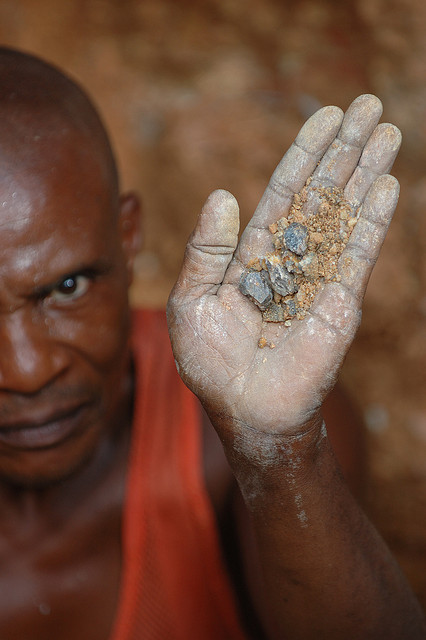

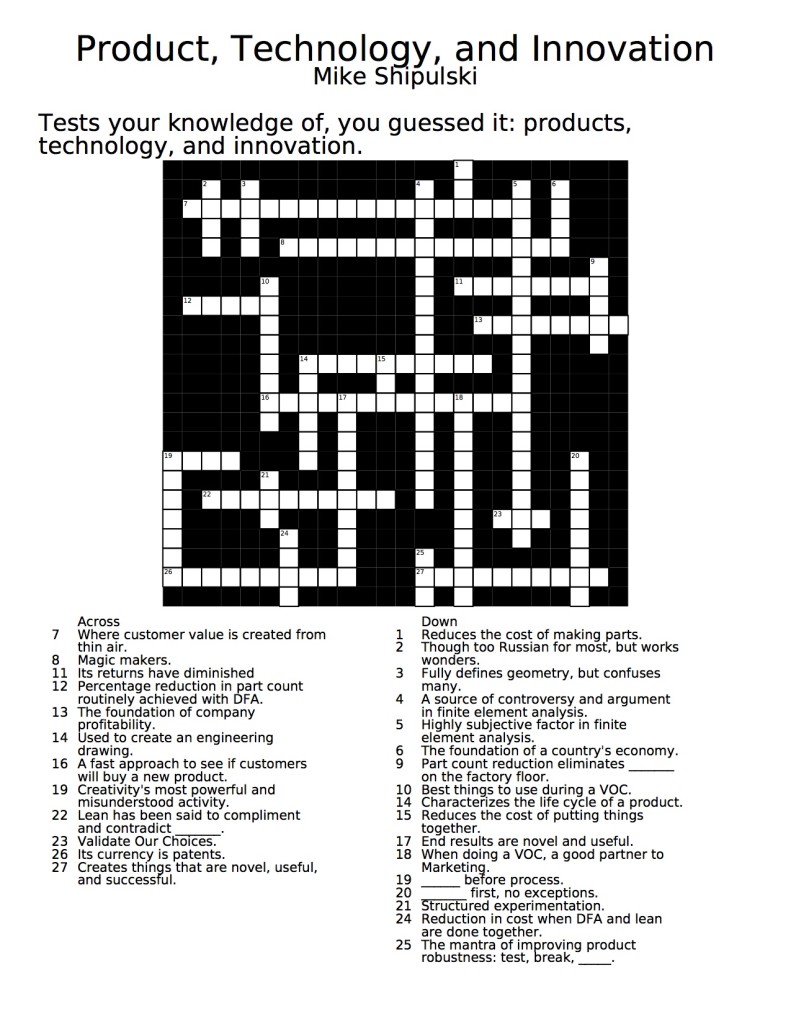
 Mike Shipulski
Mike Shipulski